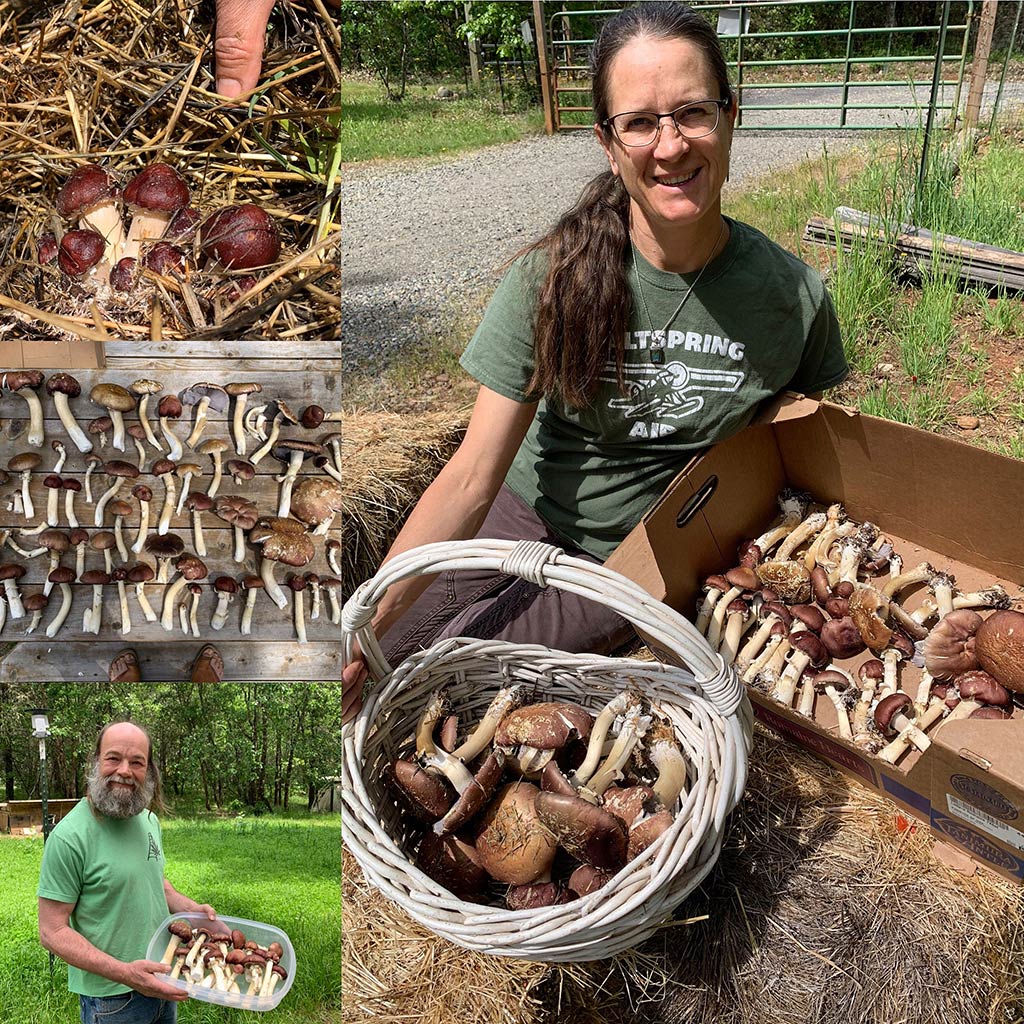Pictured are Bobby and Meredith Snodgrass, owners of Peach Orchard Team Farm and Snodgrass Family Genetics
‘We blow glass, and we grow grass’
Bob Snodgrass is an important name in the cannabis industry and we are thrilled to have been invited to plant wine caps at the Snodgrass family farm in Southern Oregon. This mushroom’s ability to digest nearly any kind of substrate is part of what makes it so special.
The beds in the photos above consisted of commercial soil, compost, native soil, deciduous leaves, and cannabis material. They were watered lightly and covered with straw as insulation. We installed their first patch in February of 2020 and it was producing dozens of mushrooms by May of 2020. The ‘POT’ farm recently inoculated their property for the second year in a row with our Wine Cap/Garden Giant spawn.
Stropharia rugosoannulata (SRA) for Soil Improvement
Wine Caps AKA the Garden Giant mushroom
Wine cap mushrooms and other saprophytic fungi are able to colonize the top few inches of mulch and soil within a bed. As the fungus grows it is able to mine nutrients from nearby organic matter that would otherwise be non-plant available (soil, woody debris, mulch, rocks, clay, compost). The rhizomorphic structure that is produced by fungi is called mycelium and it is made up of many tube-like structures that branch off to create a root-like structure. These individual filaments are called hypha(e) and they begin as tiny hairs that fan out in all directions to scout for moisture and nutrients from the nearby substrate or soil. Once these fine hyphae have colonized an area, they will turn into large tubular pathways that are able to transport an incredible amount of water and nutrients to other parts of the fungal mass.
‘Mycomulch’ Fungal Mulch
Mulching and cover cropping are both great ways to establish new garden beds and to maintain gardens that are already established. At Mycophyte Solutions we love working with all kinds of fungi whether it be a native oyster mushroom, some trichoderma that we have isolated from some compost, or the bulk wine cap material that we grow in windrows and provide to farmers. One reason that we have chosen this specific fungus to incorporate into people’s growing systems is that it tends to kick-start the soil’s biology by ‘recruiting’ other kinds of biology whether that be worms, insects, nematodes, or other fungi or bacteria (more on this below). The addition of fungi to these systems accelerates the breakdown of mulch and other debris and ultimately speeds up the production of soil organic matter.
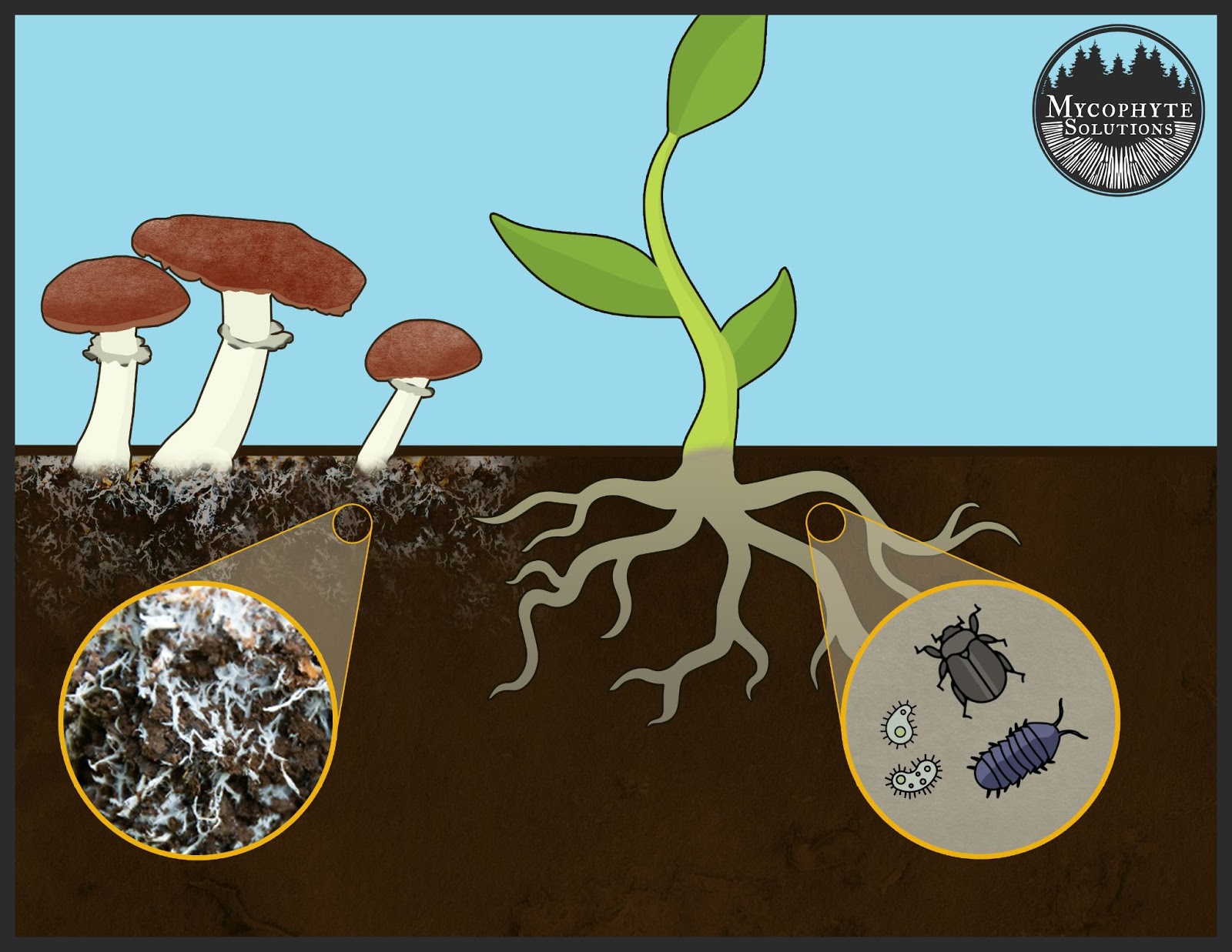
Why Do We Need Soil Biology?
Soil Aggregation and the Soil Food Web
Soils containing an active soil biome have an increased ability to aggregate sediment and organic matter. This aggregation of different soil particles produces soil organic matter; the fungi and bacteria essentially act as a glue. Soils with a high organic matter content tend to be more productive for growing crops due to their increased capacity to hold water and cycle nutrients, preventing a lot of nutrient runoff and wasted water. Soils with a high organic matter content that are teeming with biology are often called ‘suppressive soils’ on account of their ability to steward an array of beneficial organisms that provide balance and suppress pathogens. These soils will grow strong healthy plants and are the basis of a healthy soil food web and a regenerative growing system.
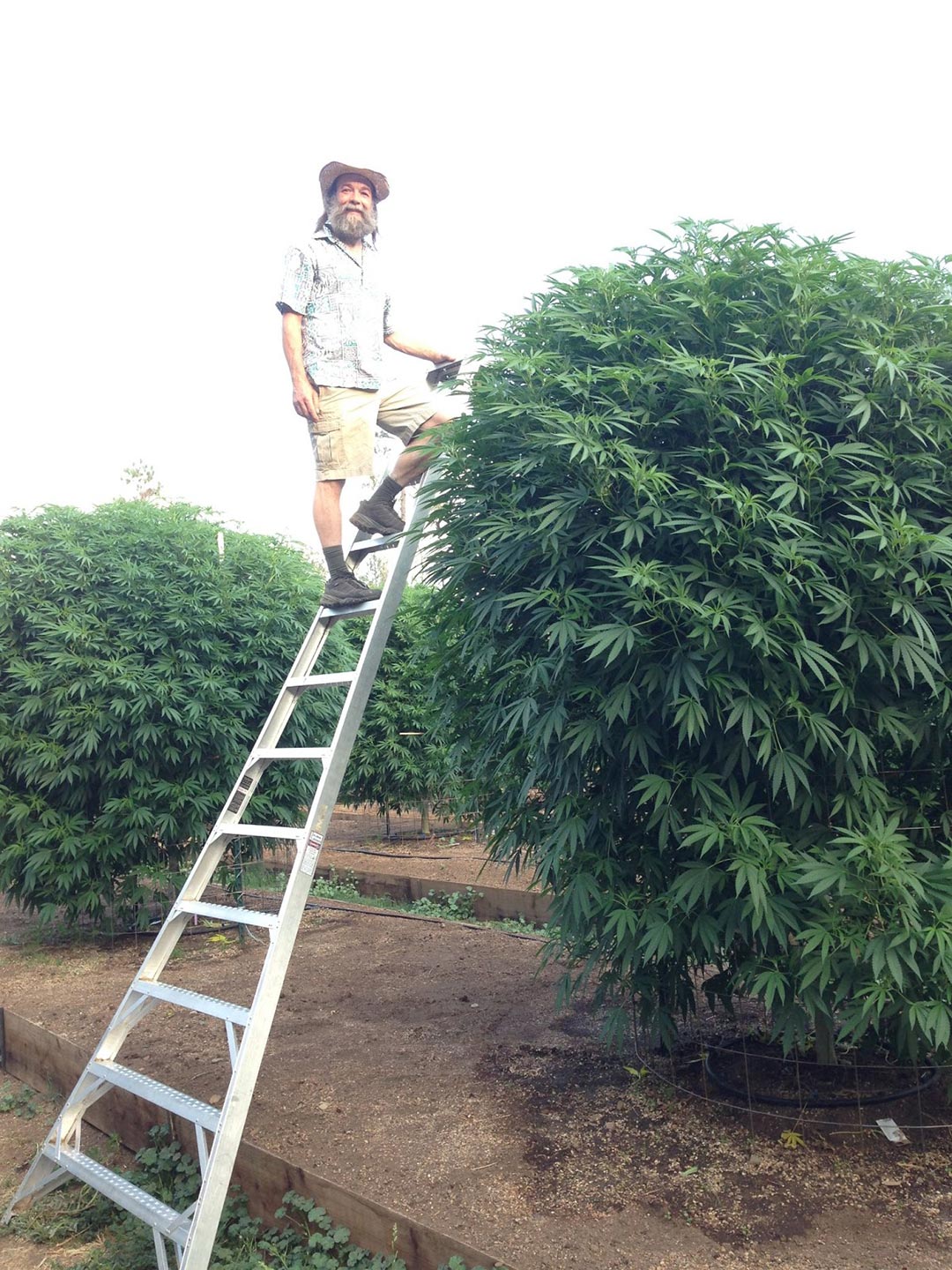
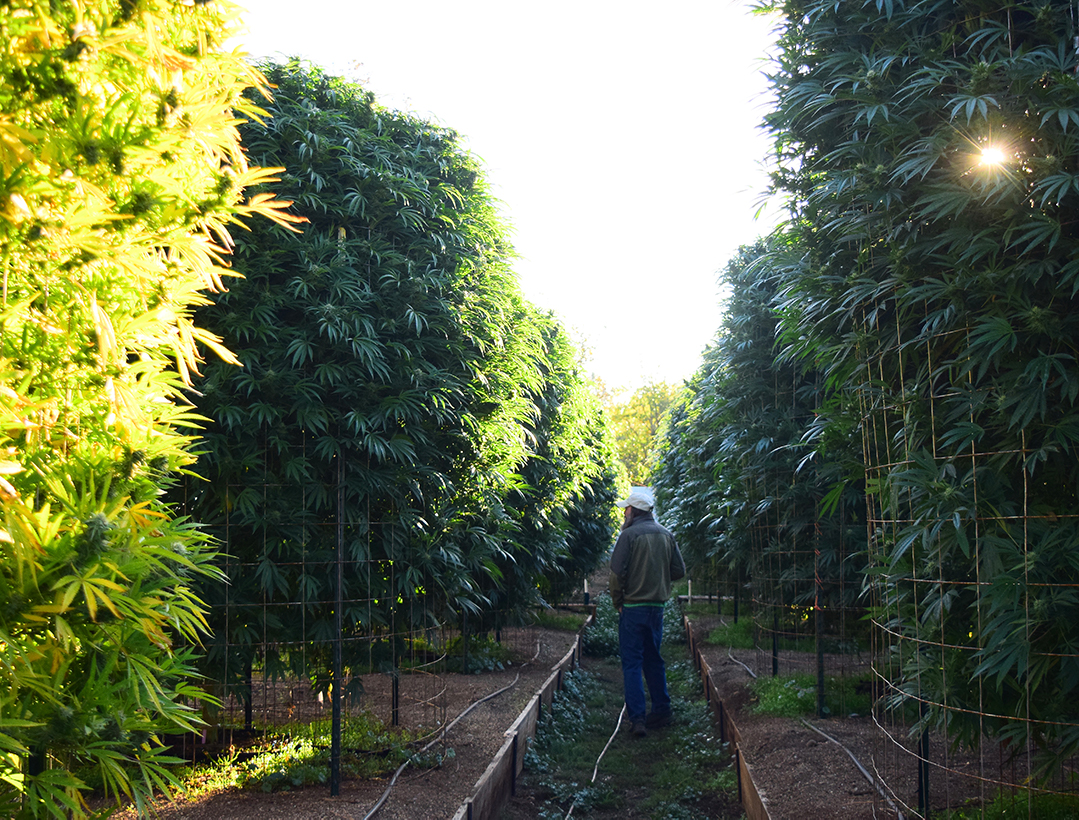
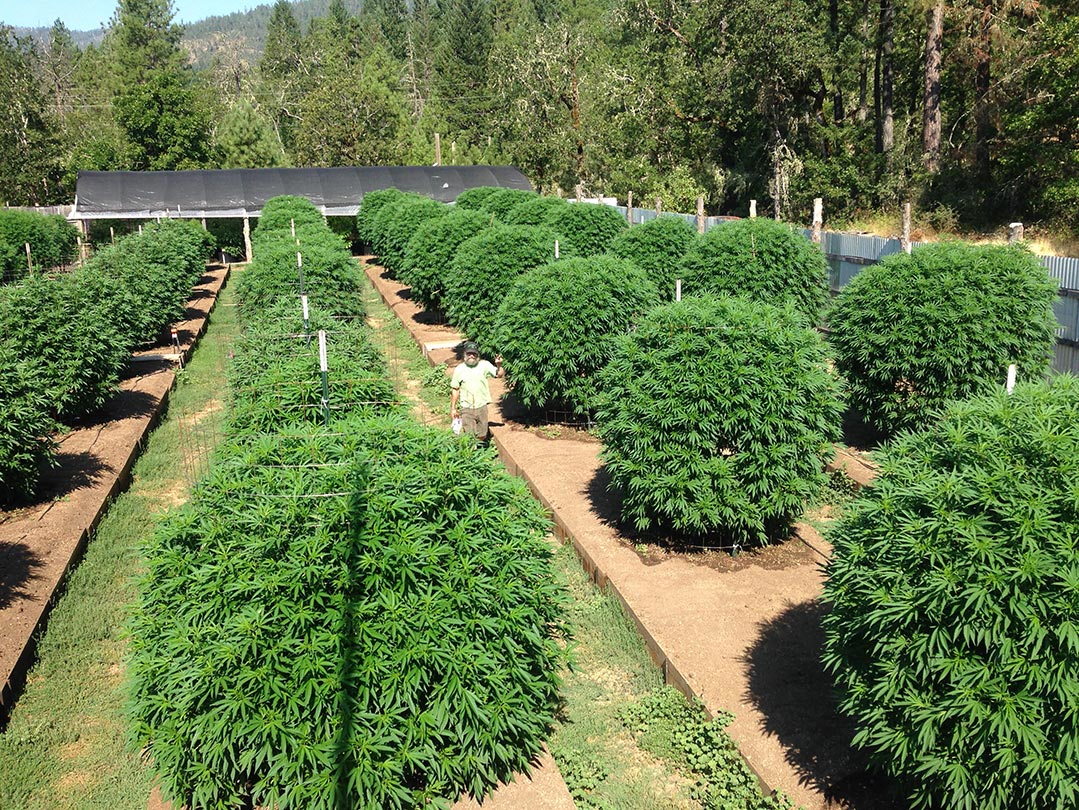
Relationships Between Fungi and Soil Communities
If you are familiar with mycology, particularly mushroom cultivation, then the concept of fungi recruiting potential competition may sound counterintuitive. Typically to inoculate a substrate you would want to pasteurize that material to kill off any fungi or bacteria prior to adding the desired inoculum, or else you will have ‘contamination’ and the desired mycelium will spend a lot of energy competing with the other organisms. Wine cap cultivation is unique because the fungus can thrive in non sterile conditions and out-compete most other soil borne organisms; Wine Cap mycelium can actually live off of other bacteria and fungi and has the ability to ‘trap’ and consume nematodes. Read more here.
If the fungi is eating these other organisms, how is it supposed to recruit them?
By growing SRA into this gradient of mulch/compost/soil we are able to use the fungus as a kind of ‘cover crop’ and begin accumulating nutrients from the topsoil and mulch. This begins the shift in the ratio of fungi to bacteria and the presence of mycelium in the soil eventually creates an environment that is habitable by many other kinds of beneficial biology. The hyphae improves the soil structure as it grows and the resulting exudates benefits the soil’s chemistry. As the mycelium starts thriving it will release fragrant compounds that attract other beneficial biology such as worms, insects, nematodes, honey bees, and even other fungi and bacteria. Read more here.
Bulk Wine Cap Spawn Production
We have tasked ourselves with creating a large enough supply of Stropharia inoculum that we can offer it to large farms and remediation projects. Through doing this we have been blown away by the speed and vigor of this fungus when it is provided with the ideal substrates and conditions. We have tried a variety of methods to grow out bulk inoculum and in the process we learned that this mycelium does not like to be coddled. When we would have contamination in our sterile spawn bags or our pasteurized totes we would discard the material into a pile outside, this discarded mycelium would continue to grow in the fluctuating outdoor temperatures and would eventually produce fully colonized material. Our failures have led us to our successes and we have figured out a process that is able to be done under the sun and in the frost.
Thorough Wine Cap Planting Instructions
Our planting methods have been successful in a wide range of climates and we describe them in depth in the pdf that is included with all of our wine cap orders. We have tons of tips for success and our planting instructions are only the tip of the iceberg of what we’ve learned, you’ll have to chat with us if you’re interested in hearing more. Many people’s plantings are successful with various low-tech methods and random substrates, we are simply sharing what has worked for us. Wine caps can be planted at any time of year so don’t hesitate to reach out and see what we have in stock. We also create custom inoculums that we culture from soil, teas, compost, KNF inputs, or even directly from a mushroom. Contact us if you are interested in inoculations!
